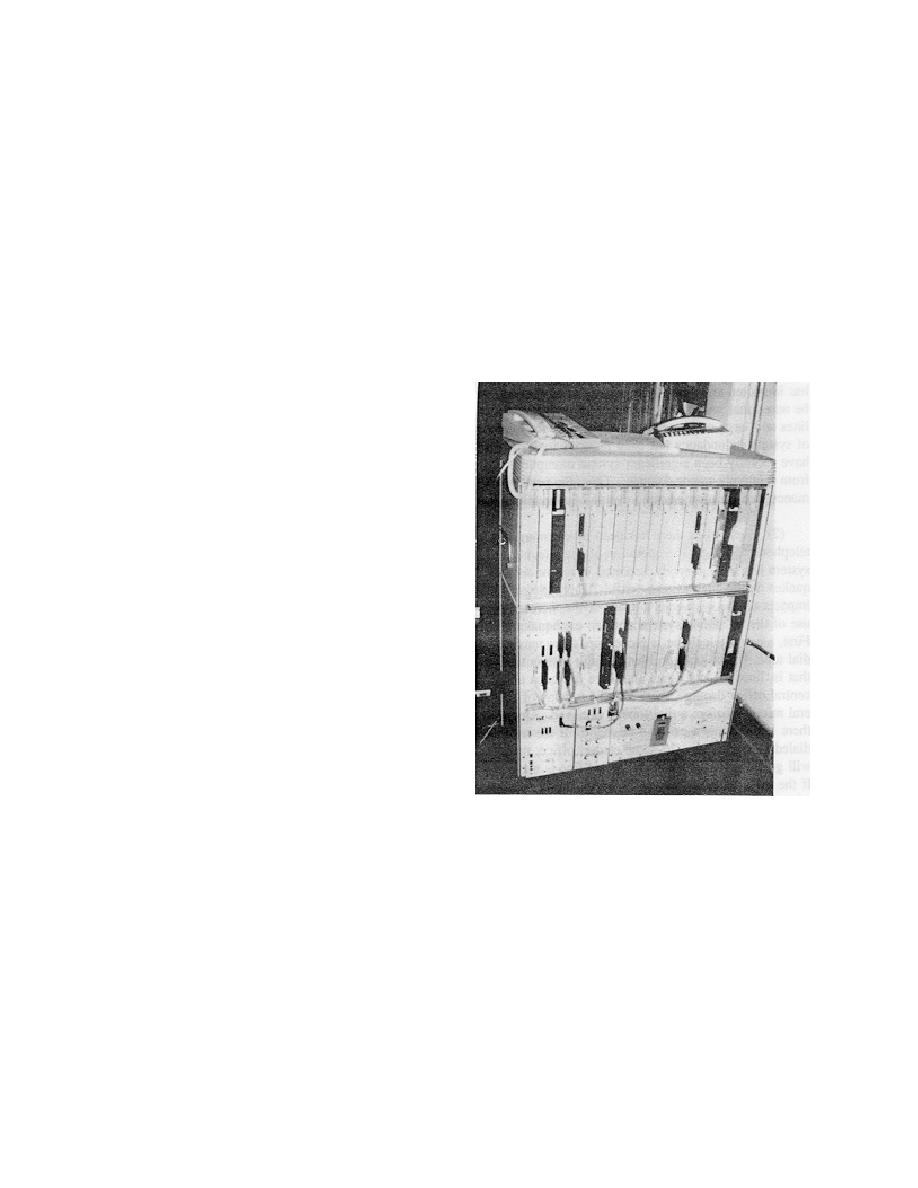
ETL 1110-2-533
30 Sep 94
(2) The PBX should be anchored and provided
g.
Computer systems.
with emergency power (Figure B-39). These systems
are typically stand-alone units and seldom exceed 6 ft
(1) Computer systems generally play a vital role
in height. Their basic seismic ruggedness will be a
in system operations. This is especially true during
function of the manufacturer and the age of the
an emergency when major changes (generator separa-
equipment. New equipment from the major manufac-
tion from the power grid may require that all turbines
turers typically incorporates good seismic design
be immediately shut down) in the operation of the
features; however, units must be anchored and pro-
system may be required, and several other systems
vided with back-up power. Older units and units
may be impacted by the effects of the earthquake.
from smaller companies may not be constructed with
the same seismic details. The main vulnerabilities are
(2) In general, the seismic performance of com-
the lack of positive restraints to prevent circuit boards
puters has been good. Systems should be anchored,
from vibrating loose, and the strength of cabinets,
an uninterruptable power source should be provided
particularly in the area near anchor bolts.
for their continued operation, and air conditioning
should be provided, where needed. When air condi-
tioners are required, they must be provided with
emergency power, and, in some systems, a water sup-
ply. The most vulnerable elements are terminals and
display units, which are often unanchored or inade-
quately anchored. They are frequently damaged by
falling from desk tops or control bench tops to the
floor. The anchoring of computers on elevated com-
puter access floors must be done with special care.
h. Communications system for power network
different than for other power-generating plants used
by the power industry. Power dispatch for most
power plants is done via computer control and is
updated several times a minute. The dispatch for
dams is typically done on an hourly basis. For dams,
an overriding consideration for the release of water is
associated with river flow control. This can be gov-
erned by many factors, such as interaction of water
release from a series of dams on a river, environmen-
tal issues related to fish in the river system, reservoir
water levels, and river flow rates. These require-
ments, along with power-generating needs, must be
integrated into power grid operations.
Figure B-39. Unanchored PBX used in a dam.
i.
Internal telephone system.
This PBX has been designed to resist earthquakes.
The circuit cards are latched in their card cages,
(1) The internal telephone system provides com-
and the power supply, which is relatively heavy, is
munication within the site and is a link to the outside.
located at the bottom of the unit to keep the center
The core of the system is usually a private branch
of gravity low. The unit is unanchored so that
exchange (PBX) that serves to connect internal calls
connecting cables can be damaged if it moves in
and is the junction to the public switch network
an earthquake
through lines from the local telephone company cen-
tral office. In some cases, instead of a PBX, a Cen-
(3) Use of a Centrex system has many advan-
trex system may be used. That is, internal calls are
tages, such as selection of system features, main-
completed by means of the switch located at the
tenance personnel always on duty, and system
telephone company's central office.
B-23


 Previous Page
Previous Page
